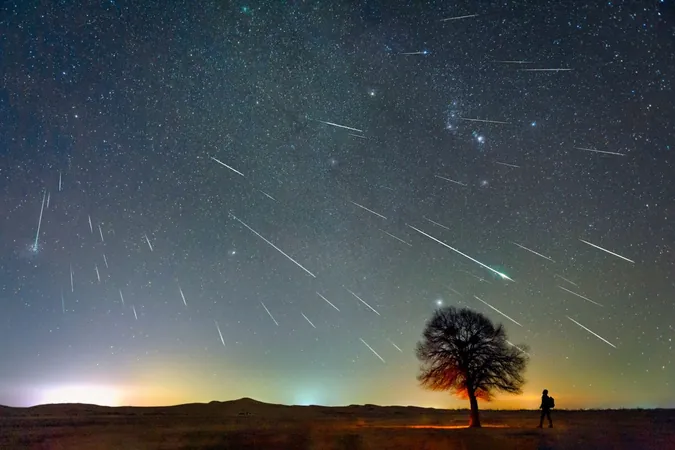
Witness the Lyrids Meteor Shower Tonight: Your Ultimate Guide to the Celestial Spectacle
2025-04-22
Author: Jia
Experience the Celestial Magic of the Lyrids!
Each April, the night sky comes alive with the dazzling Lyrid meteor shower, an enchanting display that invites stargazers to marvel at burning fireballs soaring through the atmosphere. While not the most prolific meteor shower of the year, the Lyrids bring a welcome spectacle after the quiet nights of late winter.
When Can You Catch the Lyrids in 2025?
Mark your calendars! The Lyrid meteor shower will illuminate our skies from April 15 to April 25, 2025, with peak activity peaking during the night of April 22 into the early hours of April 23. For the best viewing experience, aim to head outside during those pre-dawn hours on April 23, when the radiant point is highest in the sky.
Where to Look: Find the Best Viewing Spots!
The Lyrids radiate from the constellation Lyra, located near the bright star Vega — one of the easiest stars to spot in the northern hemisphere. After midnight, orient yourself east or northeast and scan the entire sky; meteors can appear in any direction! Leave the telescope at home; the naked eye is your best tool for catching this cosmic show.
What to Expect: How Many Meteors Will You See?
On a clear, moonless night, you could witness about 10 to 15 meteors per hour, though intense bursts could yield up to 100! The Lyrids are known for their swift and sometimes spectacular fireballs, making this event not to be missed.
The Lyrids’ Stellar Origins!
This ancient meteor shower is triggered by Earth passing through a trail of debris from Comet Thatcher, which orbits the Sun every 415 years — it last made its closest approach in 1861. As the tiny particles collide with our atmosphere at incredible speeds, they ignite, leaving behind those mesmerizing streaks of light. Remarkably, the Lyrids have been observed for over 2,600 years, first recorded by Chinese astronomers!
Pro Tips for the Ultimate Meteor Watching Experience!
Catching a meteor shower can be an adventure, and with a few helpful tips, you can enhance your experience: - **Find a Dark Spot:** Get away from city lights to minimize light pollution. - **Allow Your Eyes to Adjust:** Give yourself 20-30 minutes to adapt to the darkness. - **Dress Warmly:** Mornings can be chilly, even in spring. - **Get Comfortable:** Lay back on a blanket or reclining chair for the best view. - **Be Patient:** Meteor showers often come in bursts, so wait and watch for the show!
Use Technology to Enhance Your Stargazing!
If you're struggling to find where to look, why not use technology to your advantage? Apps like Sky Guide, Star Walk 2, and Stellarium can help you locate Vega and Lyra with just your phone. Many of these apps even utilize augmented reality, allowing you to point your device at the sky to find the meteor's radiant point.
Is This the Best Meteor Shower of the Year?
Not quite — that honor generally goes to the Perseids in August or the Geminids in December, which can produce over 100 meteors per hour. However, the Lyrids are the first notable meteor shower for northern hemisphere observers this year, providing an exciting spectacle, especially during school holidays in the UK. So, gather the family, prepare some snacks, and enjoy an unforgettable night under the stars!


 Brasil (PT)
Brasil (PT)
 Canada (EN)
Canada (EN)
 Chile (ES)
Chile (ES)
 Česko (CS)
Česko (CS)
 대한민국 (KO)
대한민국 (KO)
 España (ES)
España (ES)
 France (FR)
France (FR)
 Hong Kong (EN)
Hong Kong (EN)
 Italia (IT)
Italia (IT)
 日本 (JA)
日本 (JA)
 Magyarország (HU)
Magyarország (HU)
 Norge (NO)
Norge (NO)
 Polska (PL)
Polska (PL)
 Schweiz (DE)
Schweiz (DE)
 Singapore (EN)
Singapore (EN)
 Sverige (SV)
Sverige (SV)
 Suomi (FI)
Suomi (FI)
 Türkiye (TR)
Türkiye (TR)
 الإمارات العربية المتحدة (AR)
الإمارات العربية المتحدة (AR)